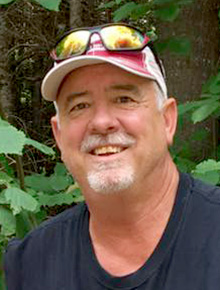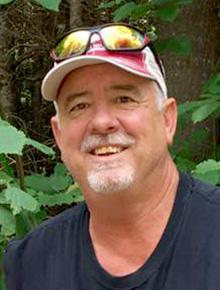
My newest Labrador, Ghost, is all grown up now at 1 1/2 years old. He makes No. 4 at my house with his superiors being 10, 7 and 5 years old. At full size he is the smallest dog I have ever had at a whopping 40 pounds.
I did all of the obedience and collar training on this dog starting at about 7 to 8 months of age. The puppy needs to grow up a little before you can expect their brains to be mature enough to grasp more challenging concepts. When you get to a certain point in the training process of a dog, you need a steady and constant supply of live birds to train with.
So I sent him to my partner and full-time training expert in Bemidji. For the past few months all he did was practice quartering and retrieving live birds. There are very few problems that any dog might have that cannot be fixed or perfected with enough live birds.
The last three weeks were spent working on a hunting preserve in Gettysburg, South Dakota. At a preserve there really is no limit to the number of birds you can shoot in a day.
He was able to make hundreds of retrieves over that three-week period. He came home on Nov. 3.
Hunting pen-raised released birds is very different from hunting the wild ringnecks of Minnesota. Pen-raised birds do not have the natural instincts of wild birds. They tend to sit pretty tight most of the time and most hunts take place in planted food plots with mowed areas around the edges. When a bird falls in the open, it’s much easier to retrieve it.
The best thing you can do for an inexperienced dog is to take them hunting by themselves. I committed that Ghost would go hunting with me for two full weeks before I allowed him to hunt with my other three dogs.
This allows the dog to learn on their own what it takes to track, flush and retrieve a wild bird without competition from other dogs, and it builds confidence in the young dog.
It can be challenging for a die-hard pheasant hunter to leave the three other members of the “A” Team at home to hone the skills of the amateur. Ghost was successful in those early weeks, but my harvest rate was way lower. Tracking a wounded bird takes time and experience in the field. I did lose two birds during that first two weeks.
Another thing you need to do with a young dog is allow them to range out further without getting in trouble. If you make steady and repeated corrections to a young dog for being too far away, you risk the chance they may just say, “OK, Dad, I’ll just stay right by your side and walk along. I can’t get in any trouble if I do that.”
As a result of a looser invisible leash, Ghost has flushed several birds out of gun range during that first two weeks. After the dog has had some success and the enthusiasm and drive is better developed, you can start to rein them in to the proper distance.
The way to keep a dog in gun range is a correction for failure to comply with a known command. In my world I use a whistle for several commands. One long blast on the whistle means “sit.” Tooting the whistle over and over means come to me. If the dog is getting too far away, I will use the whistle “here” command to come to me.
If the dog does not comply with the “here” command, I will give the whistle command again and then apply a small amount of stimulation to the training collar to enforce the known command here.
My challenge with Ghost is that he hunts like a rocket. It only takes a few seconds for him to cover an additional 40 yards and be too far away. Some dogs hunt slower and more methodically, and others run full speed and cover more ground. It is great to hunt these two styles together.
He is going to be a star pheasant hunter. He is now running with my other dogs, and they will need to be on the top of their games unless they want Ghost to get all the feathers in his mouth.
The season is more than half over and the hunting is getting much better as the birds start to bunch up a little.
When the dogs know their jobs and do them well, there is no prettier picture than four dogs following their noses all the way to pheasants in my vest.
Scott Rall, Worthington, is a habitat conservationist, avid hunting and fishing enthusiast and is president of Nobles County Pheasants Forever. He can be reached at scottarall@gmail.com. or on Twitter @habitat champion.



